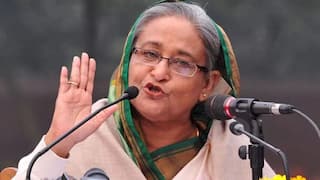Child labour continues to leave its mark on society

Ranchi (Jharkhand) [India], June 11 (ANI): A recent incident of sexual misconduct with a minor maid in a posh colony in New Delhi has exposed the reality of child labour laws.
According to the police, the 12-year-old girl belonged to a region in Jharkhand and due to financial constraints, the parents of the girl sent her with a non-registered placement agency that brought her to Delhi and handed her over to a human trafficker.
Such incidences of keeping children as servants and sexually abusing them are common in large homes. Many times these incidents do not come to light and human traffickers take advantage of it.
Child labour, child abuse and child trade in India remain a big problem. Economic stagnation and hunger work like a magical potion for child traffickers. This is the reason that the highest number of child trafficking is from states like Bihar, Jharkhand and Chhattisgarh.
It is a horrendous fact that the poor and backward classes of these states are literally struggling for each and every morsel of food. The direct impact of not getting work, getting less money for work or not getting their wages on time falls on their children and their future.
Due to lack of wages in the remote areas of Bihar and Jharkhand and in Naxal affected areas, large number of workers continuously migrate to big metropolis like Delhi, Kolkata and Mumbai and commercial and industrial cities like Agra, Jaipur, Punjab, Lucknow, Kanpur, Moradabad, Faridabad, Bareilly and Surat.
These include a large number of child labourers who are employed as bonded laborers in bangles, utensils, clothes, leathers, bakery and chemical factories.
According to the estimation of the International Labour Organisation, there are 218 million child labourers in the world. According to the official website of the Central Government's Labour Ministry, according to the 2001 census, 1.26 crore children working in the age group of 5-14 years are working in India compared to the 25.2 million total children population.
Nearly 12 lakh of these children are working in such hazardous occupations and industries, which is prohibited under the Child Labour (Prohibition and Regulation) Act.
In urban areas, there are a high number of children who work in the canteen or in rag-picking or in selling goods on the roadside. But there are no official numbers in this regard. The more unlucky children are those who are employed in the risky ventures.
There are so many children who work in harmful polluted factories, which have soot on the walls and the air is toxic. They work near such furnaces which burn at 1200 degrees Celsius. They use hazardous chemicals like arsenic and potassium. These children are employed in units of glass-blast, where their lungs are stressed, due to diseases like tuberculosis. But even then, on the orders of their owners, they have to work 12 to 15 hours continuously. On the other hand, children who collect various materials for recycling from the garbage pile, contract many dangerous and infectious diseases prematurely.
The main causes of child labour in India are poverty, illiteracy, unemployment, low income, etc. Where more than 40 percent people are suffering from poverty, in this situation, children feed themselves and their parents during their childhood.
In India, a large section of the population is uneducated, whose aim to make money is more important than obtaining education and this encourages child labour.
The government has been emphasising the need for legislation and strict implementation of various laws related to child violence, gender crimes, trafficking of children and child labour.
In Part 3 of the Constitution, Article 12 to 30 and 32 to 35 have been described as fundamental rights which prohibits exploitation of rights, human trafficking, forced labour and begging. To make children under the age of 14 years do any hazardous work is considered a crime.
In the year 1949, the government set the minimum age of 14 years for workers in various government departments as well as in other areas. The government of India formed the Gurupad Swami Committee for the study of child labour problems in 1979, whose suggestion was implemented in the Child Labour Act 1986.
This is the first comprehensive law, which prohibits employment of children below the age of 14 years in the construction of systematic industries and other difficult industrial businesses such as beedi, carpet, match, fireworks etc. Despite this, the number of child labour in our country is still in crores.
Each year on June 12, World Day against Child Labour is celebrated. Governments, employers and workers' organisations, civil society, as well as millions of people from around the world come together to highlight the plight of child labourers and what can be done to help them.
The Sustainable Development Goals (SDGs), adopted by world leaders in 2015, include a renewed global commitment to ending child labour. Specifically, target 8.7 of the Sustainable Development Goals calls on the global community to: "Take immediate and effective measures to eradicate forced labour, end modern slavery and human trafficking and secure the prohibition and elimination of the worst forms of child labour, including recruitment and use of child soldiers, and by 2025 end child labour in all its forms."
But in spite of all this, the truth is that child labour is continuing. Kailash Satyarthi, the Nobel Prize winner, believes that child labour can be eliminated with collective actions, political will, adequate resources and adequate sympathy for the deprived children. The day we start behaving like a child with a poor child, child labour will end automatically.
The views expressed in the above article are that of Prem Kumar Vidyarthi of Charkha Development Communication Network. (ANI)
This story has not been edited. It has been published as provided by ANI
Trending News
Top Headlines





























